Trust As A Design Element
TRUST — WHERE ACTIONS MEET WORDS
Always earned, never given, trust, is the foundational relationship that financial facilities seek to build.
Each one of our clients—from banks to credit unions and the insurance industry—understands the importance of establishing an authentic bond with customers, members, and the community alike. These relationships establish enduring trust, a crucial building block to becoming a preferred source for financial services.
Our Goal Is To Design Spaces Which Transcend An Impersonal Transactional Atmosphere To Achieve One Of Comfort, Confidence, And Trust
KNOW YOUR USER
Fundamental to the success of a financial enterprise is understanding your audience. Here, we’ll focus on technology acceptance within the consumer financial services arena. These three demographics are the tech-savvy, tech comfortable, and tech inexperienced.
The tech-savvy thrive with digital devices and routinely engage services online. They have likely not set foot into a bank or credit union in a very long time. When designing for this demographic in mind, consider how you can draw them into a physical space. What can you offer in-person, that you cannot offer online?
For the tech comfortable, this demographic manages to engage rudimentary to intermediate digital devices. They are, however, hesitant to solely engage in financial services via digital devices. Concerns often revolve around security/privacy and the accuracy of transactions. This group flourishes with a blend of in-person and interactive digital experiences.
And finally, we consider the tech inexperienced demographic. While this group has gained a “workable familiarity” and acceptance with financial technology, (i.e., the corner ATM or contactless transactions) they are most likely to always choose in-person financial services.
- Thrive with digital devices
- Often engage services offline
- Do not often use in-person services
- Use intermediate to rudimentary digital devices
- Hesitant to engage services solely online
- Flourishes with a blend of in-person and digital services
- “Workable familiarity” with digital devices
- Concerned about the security of online services and accuracy of transactions
- Usually chooses in-person services\
Each one of these demographics must be considered when balancing the priorities of a financial branch. How do we design physical space around each group’s priorities? Which demographic is your facility aimed at? Are we functionally respectful of a customer’s/member’s operational requirements? For example, the design of a financial facility must strike a balance between designing for openness and privacy, or between a welcoming atmosphere and the need for security. As designers, we are responsible for designing thoughtful environments that are aesthetically pleasing and respectful of differing customers’ needs and operational requirements.
Most importantly—are we adequately providing customers from all demographics with an intuitive, efficient, and easy experience that will instill trust and confidence?
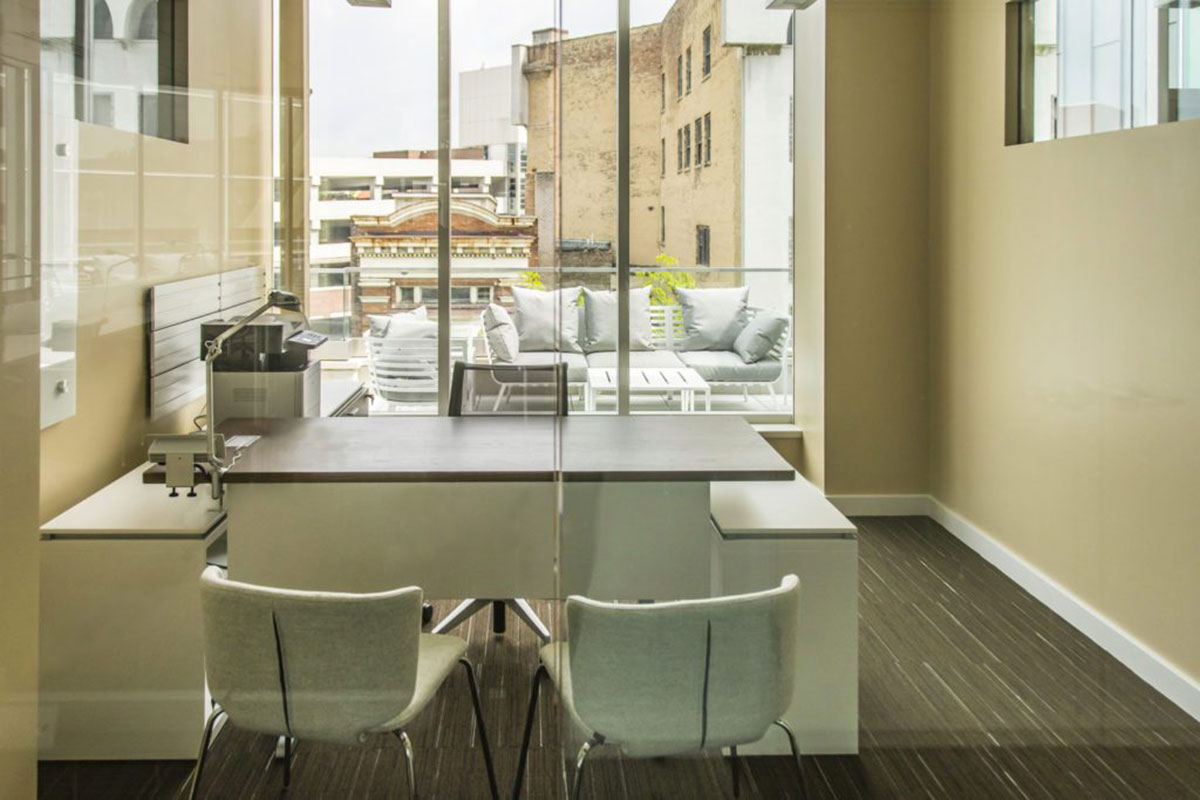
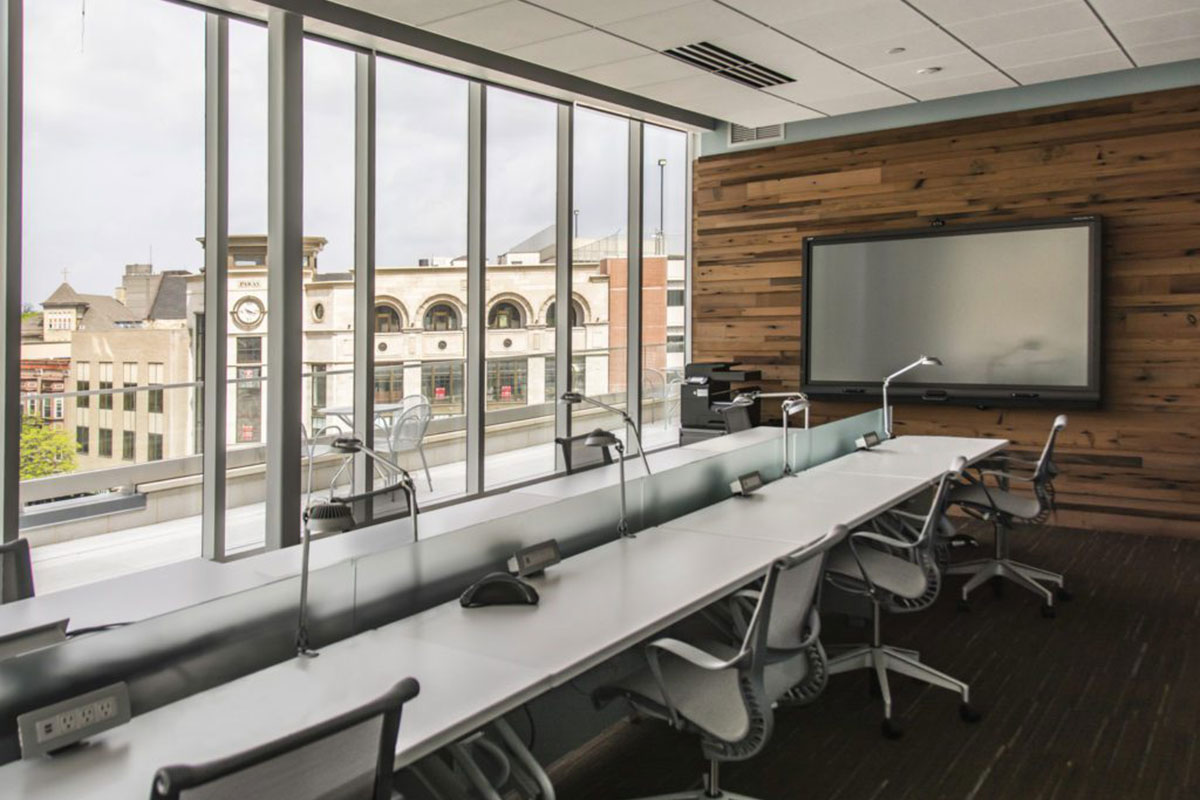

CONSISTENCY IS KEY
One tenet of trust that we place at the top of our design considerations is consistency. Consistency impacts two fronts: first, keeping facility designs on-brand and aligned, and second, achieving brand recognition across multiple locations.
A memorable brand experience positively differentiates you from your competitive set, helps grow your business, and reinforces the feeling of familiarity and trust with your users. Your built environments should evoke similarly aligned customer/member experiences. There shouldn’t be a disconnect from your brand when someone walks through the doors. Consider how furnishings, floorplans, natural lighting, color, or ceiling heights embody your brand’s experience and find ways to consistently display this in every branded environment.
FROM OUTSIDE IN
Architects and interior designers hold an important role in presenting your brand to the community. They must ask—does your building’s exterior accurately communicate your brand and positively resonate with the public? This question must then be balanced with a community’s existing design covenants (guidelines that prescribe a certain look and feel to buildings). The integration of municipal regulations with strong brand standards will help keep brand consistency while positively engaging the community.
Consider too that new community financial branch locations may be the first introduction someone has to your organization. What do you want your first impression to say? If you have multiple locations, consider the impact consistent design elements and thematic messaging will have on your brand. Design continuity inside and out reassures audiences they will receive the familiar level of care they associate with your brand.
A meaningful pattern of familiar experiences strengthens authentic bonds with customers/members.

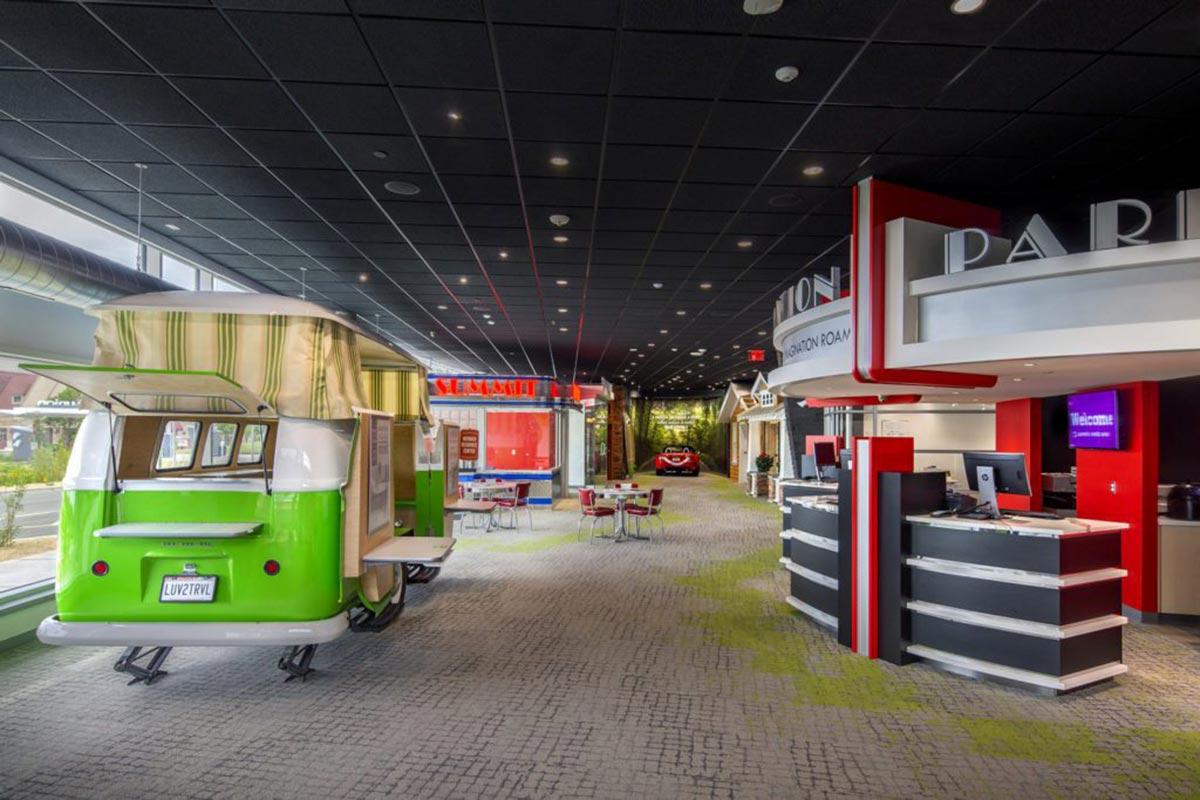
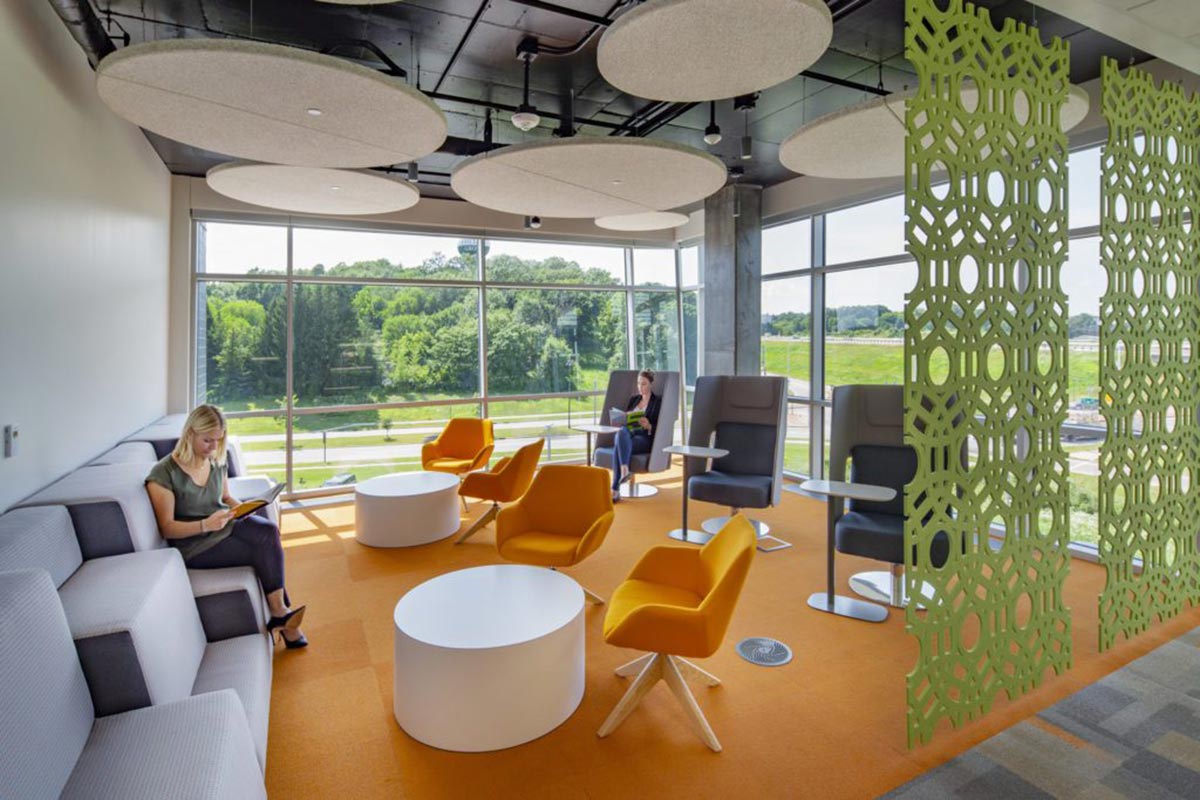
CONNECTIONS
Our Experience Shows The Public Embraces A Digital Interface, But Ideally With A Human Connection. Hello ITM.
Creating a digital experience with ITMs and video banking is certainly a very current trend in credit unions and financial institutions today. Over the past 30 years, we at Strang have experienced first-hand the game-changing digital transformation of the financial services industry. Several of our credit union clients have converted practically all their teller pods into ITMs, and our Strang team has facilitated all of these conversions. All the new branches that we are currently designing have ITMs in place of tellers. In addition to the ITMs, we are also designing video banking capabilities into the offices/huddle rooms of branches.”
-Peter Tan, Chief Design Officer at Strang
The advantages of video banking and ITMs include:
- Access to the best and most relevant expertise, not just dependent on the staff at that particular location. This gives customers/members access to the collective wisdom of the entire financial institution.
- Reduced wait for service at the branches because tellers are in a central location. Tellers can serve “the next person in line” regardless of which branch/drive-up teller location they are at.
- Increased site flexibility. Once you have an ITM drive-up teller, you can decouple the drive-up line from the physical building. This provides significantly more flexibility in the overall site layout. In addition, branches can now fit upon smaller sites which may result in huge savings from a lower real estate cost.
- Offering a personal touch to the digital experience. While technology has changed, people haven’t. As the convergence of digital and in-person financial experiences continues to evolve, the modern customer/member still wants someone that is approachable and trustworthy.
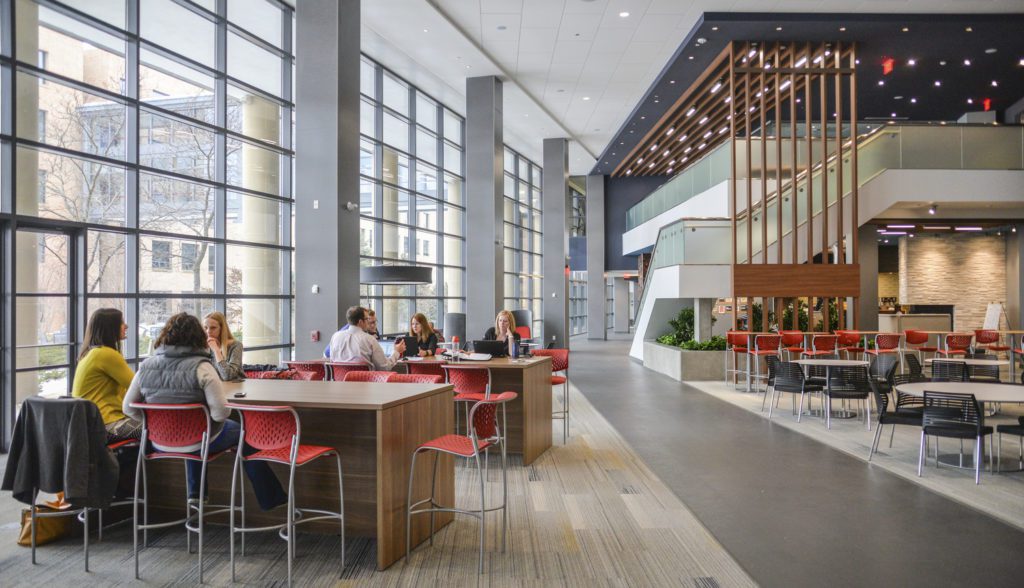
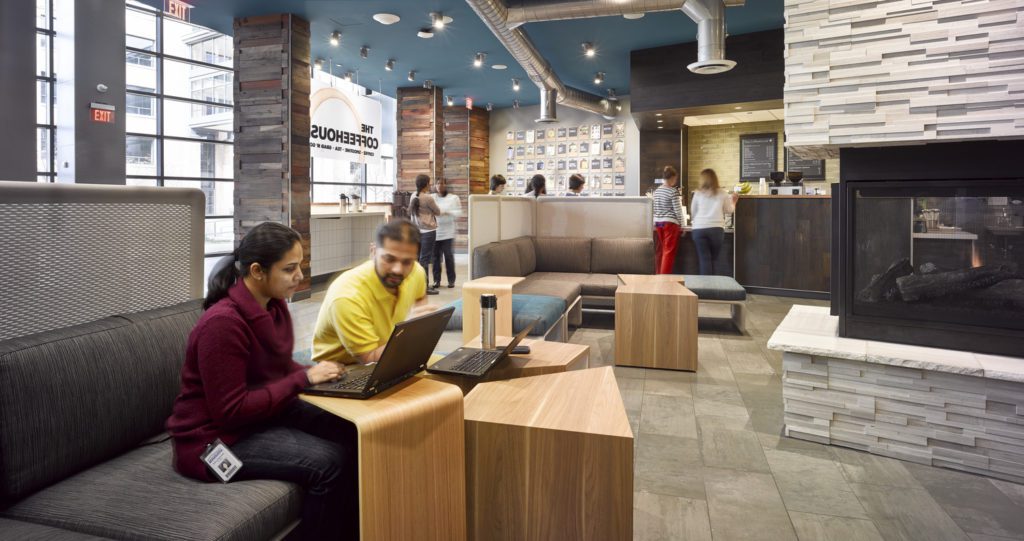
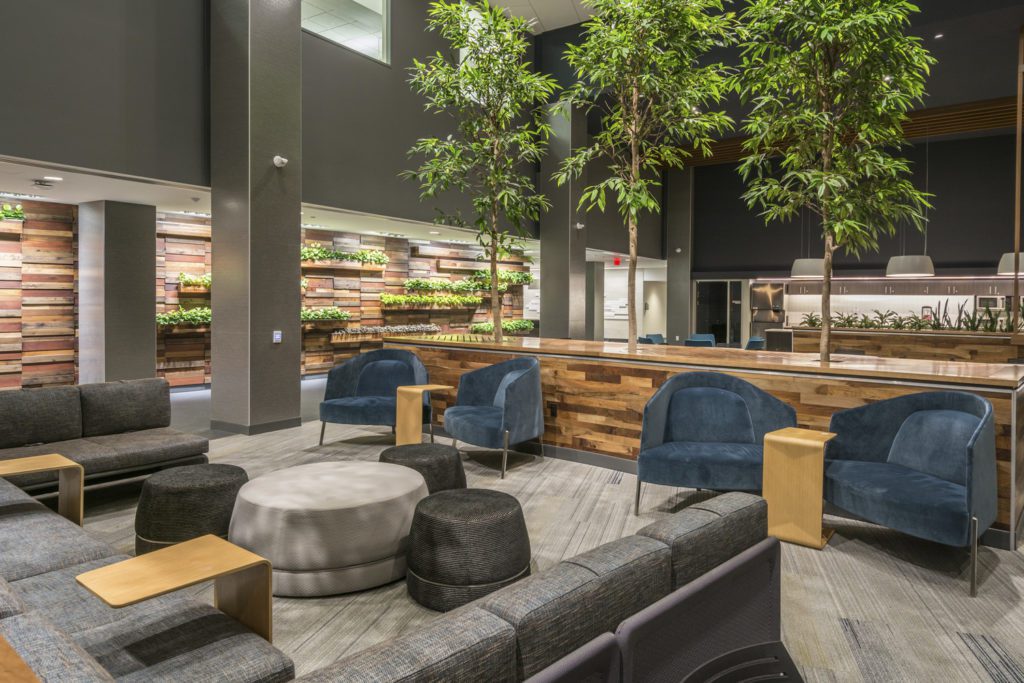
CO-CREATION: AN AUTHENTIC COLLABORATION
The primary message of this article is the importance of trust as a design element, and there is no better example of trust than authentic collaboration. In partnership with our financial services clients, we entrust one another with critical thinking, creative brilliance, mindful project management, transparency, and accountability. Trust is built upon performance—of words and action. Trust empowers all of us to achieve beyond expectations.
“For more than 20 years, Strang has been a creative co-creator, helping to empower Summit’s unique brand. They understand my vision and mission for Summit and our goal of inspiring members to achieve their dreams. Together with Strang, we have collaborated on something special by transcending stereotypical financial institutions and designing enjoyable, engaging, light-filled branches that reach our community, while meeting functional and security needs. As Summit continues to grow, we look forward to our continued creation of workspaces that make sense and reflect our needs.”
-Kim Sponem, President/CEO, Summit Credit Union
Learn more about Strang and our design process here!











